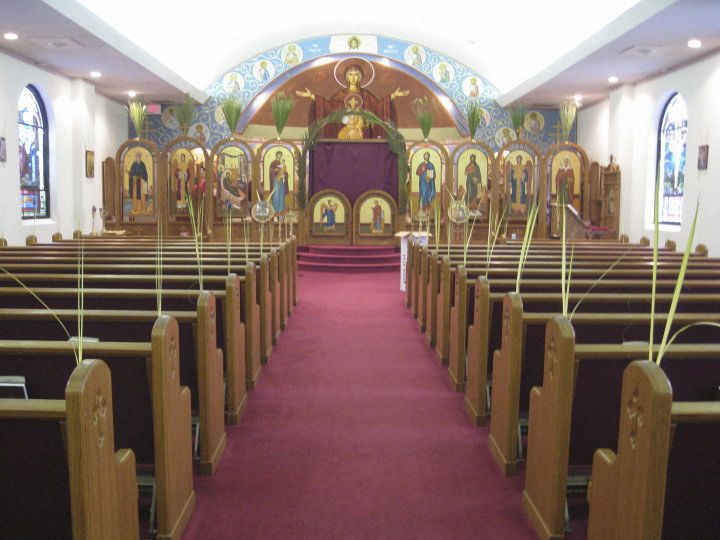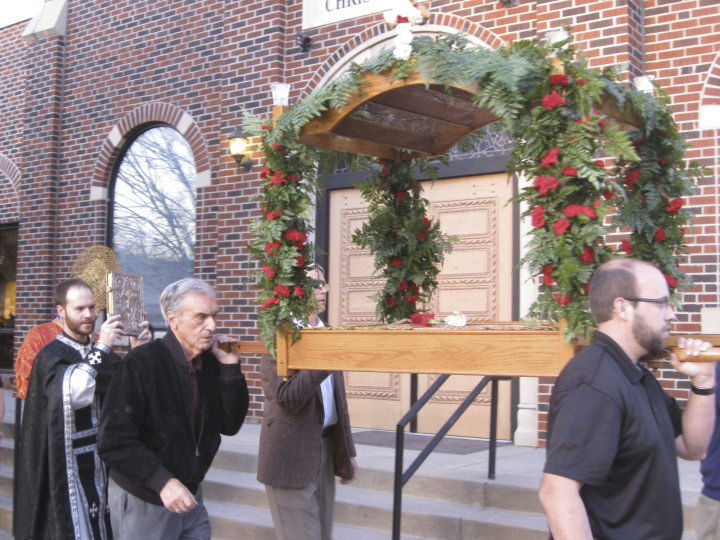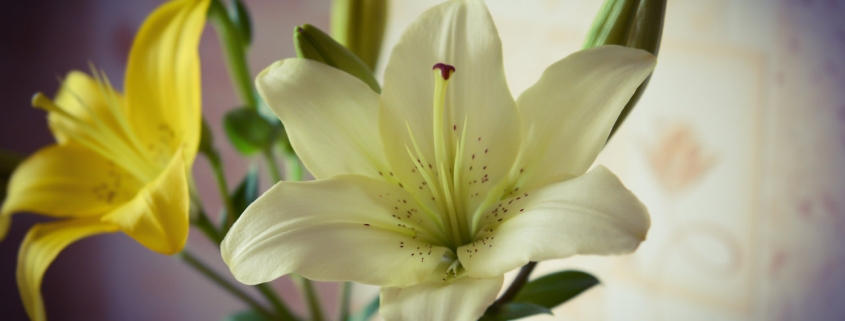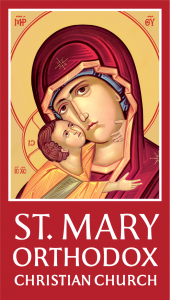Experiencing and Understanding Holy Week and Pascha
*Reprinted from “The Light” from Saints Constantine & Helen Greek Orthodox Church in Webster, Massachusetts.
The services of Holy Week transform us into eyewitnesses and direct participants in the awesome events of the Passion and Resurrection of Jesus Christ. In readings taken from both the Old and New Testaments, in hymns, processions, and liturgical commemoration, we see the fulfillment of the Messianic prophecies and the mighty acts by which God Himself, in the person of Jesus Christ, grants us forgiveness for our sins, and rescues us from the pain of eternal death.
Holy Week and the celebration of Pascha should be the highlight of the entire year for Orthodox Christians. We not only remember but we re-live the saving events of our Lord Je-sus, which become life-changing events in our own lives. Make an effort and come to as many or even all of the services during this week. Yes, there are many services and they are long. You will be in church more than 20 hours, yet you will journey with our Lord through His passion and suffering, as well as partake with Him in His glorious Resurrection.
Lazarus Saturday
Lazarus Saturday is the day which begins Holy Week. It commemorates the raising of our Lord’s friend Lazarus, who had been in the tomb four days. This act confirmed the universal resurrection from the dead that all of us will experience at our Lord’s Second Coming. This miracle led many to faith, but it also led to the chief priest’s and Pharisees’ decision to kill Jesus (John 11:47-57).

Palm Sunday
Our Lord enters Jerusalem and is proclaimed king – but in an earthly sense, as many people of His time were seeking a political Messiah. Our Lord is King, of course, but of a different type – the eternal King prophesied by Zechariah the Prophet. We use palms on this day to show that we too accept Jesus as the true King and Messiah of the Jews, Who we are willing to follow – even to the cross.
Holy Monday, Holy Tuesday, and Holy Wednesday
The first thing that must be said about these services, and most of the other services of Holy Week, is that they are “sung” in anticipation. Each service is rotated ahead twelve hours. The evening service, therefore, is actually the service of the next morning, while the morning services of Holy Thursday and Holy Saturday are actually the services of the coming evening. The services of these days are known as the Bridegroom or Nymphios Services. At the first service of Palm Sunday evening, the priest carries the icon of Christ the Bridegroom in procession, and we sing the “Hymn of the Bridegroom.” We behold Christ as the Bridegroom of the Church, bearing the marks of His suffering, yet preparing a marriage Feast for us in God’s Kingdom. Each of these Bridegroom services has a particular theme. On Holy Monday, the Blessed Joseph, the son of Jacob the Patriarch, is commemorated. Joseph is often seen as a Type of Christ. Joseph was betrayed by his brothers, thrown into a pit, and sold into slavery by them. In the same way, our Lord was rejected, betrayed by His own, and sold into the slavery of death. The Gospel reading for the day is about the barren fig tree, which Christ cursed and withered because it bore no fruit. The fig tree is a parable of those who have heard God’s word, but who fail to bear the fruit of obedience. Originally the withering of the fig tree was a testimony against those Jews who rejected God’s word and His Messiah. However, it is also a warning to all people, in all times, of the importance of not only hearing the God’s word, but putting it into action.
The Parable of the Ten Virgins is read on Holy Tuesday. It tells the story of the five virgins who filled their lamps in preparation for receiving the bridegroom while the other five allowed their lamps to go out, and hence were shut out of the marriage feast. This parable is a warning that we must always be prepared to receive our Lord when He comes again. The theme of the day is reinforced by the hymn we sing: “I see Your Bridal Chamber adorned, O my Savior, but have no wedding garment that I may enter. O Giver of Light, enlighten the vesture of my soul, and save me.” The theme of Holy Wednesday is repentance and forgiveness. We remember the sinful woman who anointed our Lord in anticipation of His death. Her repentance and love of Christ is the theme of the wonderful “Hymn of Kassiane” which is chanted on this night, reminding us one more time, before “it is too late,” that we too may be forgiven if we repent.
Holy Wednesday – Holy Unction
The Mystery or Sacrament of Holy Unction is celebrated on Holy Wednesday evening. Actually this service can be celebrated any time during the year, especially when one is ill. However, because of our need for forgiveness and spiritual healing, we offer this service during Holy Week for the remission of our sins. We should prepare for this service in a prayerful way, as we do for Holy Communion.
Holy Thursday
We turn to the last events of our Lord and His Passion. Thursday morning begins with a Vesperal Divine Liturgy commemorating the Mystical Supper. Everyone who is able should make an effort to receive Holy Communion at this service as it was at the Mystical Supper that our Lord instituted the Holy Eucharist. We remember also that this is when Jesus washed the feet of His disciples, teaching them the lesson to always be servants who wash the feet of others. At this Liturgy a second Host is consecrated and kept in the Tab-ernacle. It is from this Host that Holy Communion is distributed to the shut-ins and the sick throughout the coming year.
Thursday Evening
This actually begins the services of Great and Holy Friday. We re-live the undeserved suffering of Jesus Christ, endured for our sake, so that we might be reconciled anew to God our Father. The service of the Twelve Passion Gospels commemorates the solemn time of our Lord’s Crucifixion. After the reading of the fifth Gospel, the holy cross is carried around the church in procession, and Christ’s body is nailed to the cross in the center of the church.

Holy and Good Friday
This holiest of all days is a day of strict fast. As little as possible should be eaten on this day. It is the only day in the entire year that no Divine Liturgy of any kind can be celebrated. In the morning we celebrate the Royal Hours. These solemn hours are observed as we read the various accounts and hymns concerning the crucifixion. In the afternoon we celebrate the Vesper service of the taking down of Christ’s body from the cross. During the Gospel reading, our Lord’s body is taken off the cross and wrapped in a new, white linen sheet. This act commemorates the removal of Christ’s body from the cross by Joseph of Arimathea (John 19:38-42). Later in the service, the Epitaphios, or winding sheet, with Christ’s body on it is carried in procession and placed in the recently decorated tomb. In the evening the Lamentations service is sung. This service begins in a solemn manner, but by the end of the service we are already anticipating the Resurrection of our Lord. Remember again, that the Holy Friday evening Orthros is actually the first service of Holy Saturday, the day in which we commemorate our Lord’s body resting in the tomb while His all-pure soul descends into Hades to free the faithful of the Old Covenant.

Great and Holy Saturday
This day is a day of hope and waiting. In the morning we celebrate a Vesperal Divine Liturgy which commemorates Christ’s victory over death. Bright vestments are worn as we anticipate Christ’s Resurrection. Roses or laurel leaves are strewn throughout the church during the service, because in the ancient world laurel leaves were a sign of victory. As the leaves are strewn, the choir chants “Arise O God and Judge the earth, for to You belong all the nations.” The Old Testament story of Jonah in the belly of the whale is read at this service because Jonah is seen in the Church as a proto-type of Christ. As Jonah was three days in the belly of the great fish, and was then safely deposited back onto land, so our Lord was three days in the tomb before His glorious Resurrection. The Vesperal Divine Liturgy of Holy Saturday concludes the services of Holy Week, and brings us to the eve of Great and Holy Pascha.

Holy Pascha Midnight Service
In this service the church is plunged into darkness to symbolize the despair and defeat experienced before the dawn of Christ’s victory over the Enemy of our salvation. Precisely at midnight, a single light emerges from the altar representing the victory of Christ over death, the defeat of the Prince of Darkness by Jesus, the Light of the World. As the light is passed from person to person, it pushes back the darkness of the church and de-feats it completely. The Resurrection is proclaimed in song and triumphant procession, and after the Liturgy, its light is carried into our homes so that they too might be filled with its light and warmth and triumph.
Pascha Sunday Vespers of Love
Christ’s Resurrection and victory is affirmed in this morning’s theme. The Gospel is read in numerous languages to illustrate the universality of the Good News of the Resurrection and its proclamation every nation to the very ends of the earth. Love, forgiveness, reconciliation, triumph, hope and joy – these are the gifts which we receive because Christ lived and died and conquered evil and death, triumphing for our sake.
Christ is Risen! Truly He is Risen!
May we never allow anything that happens in our lives make us forget about the hope and joy we have through Jesus Christ’s Resurrection from the dead!



